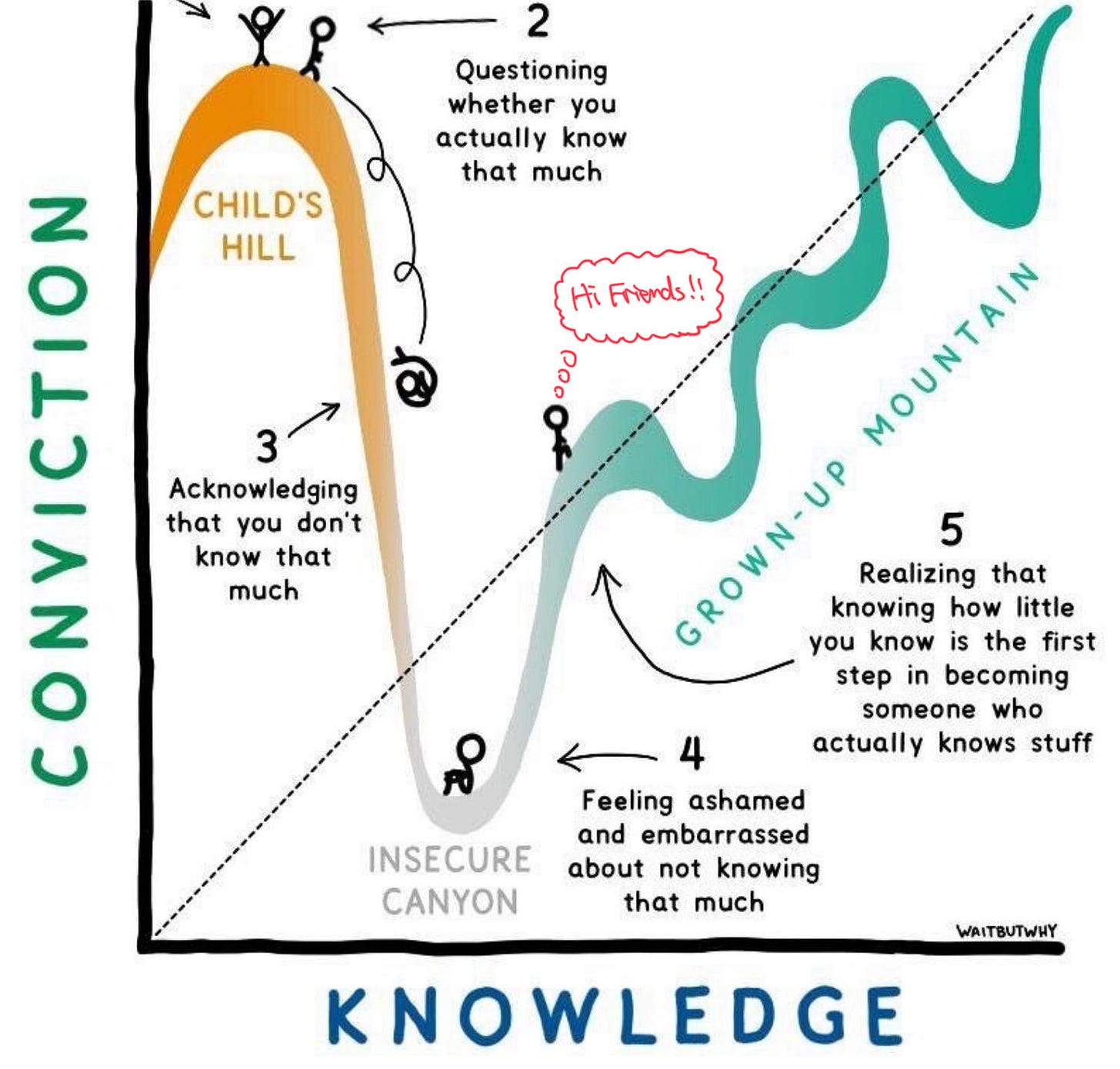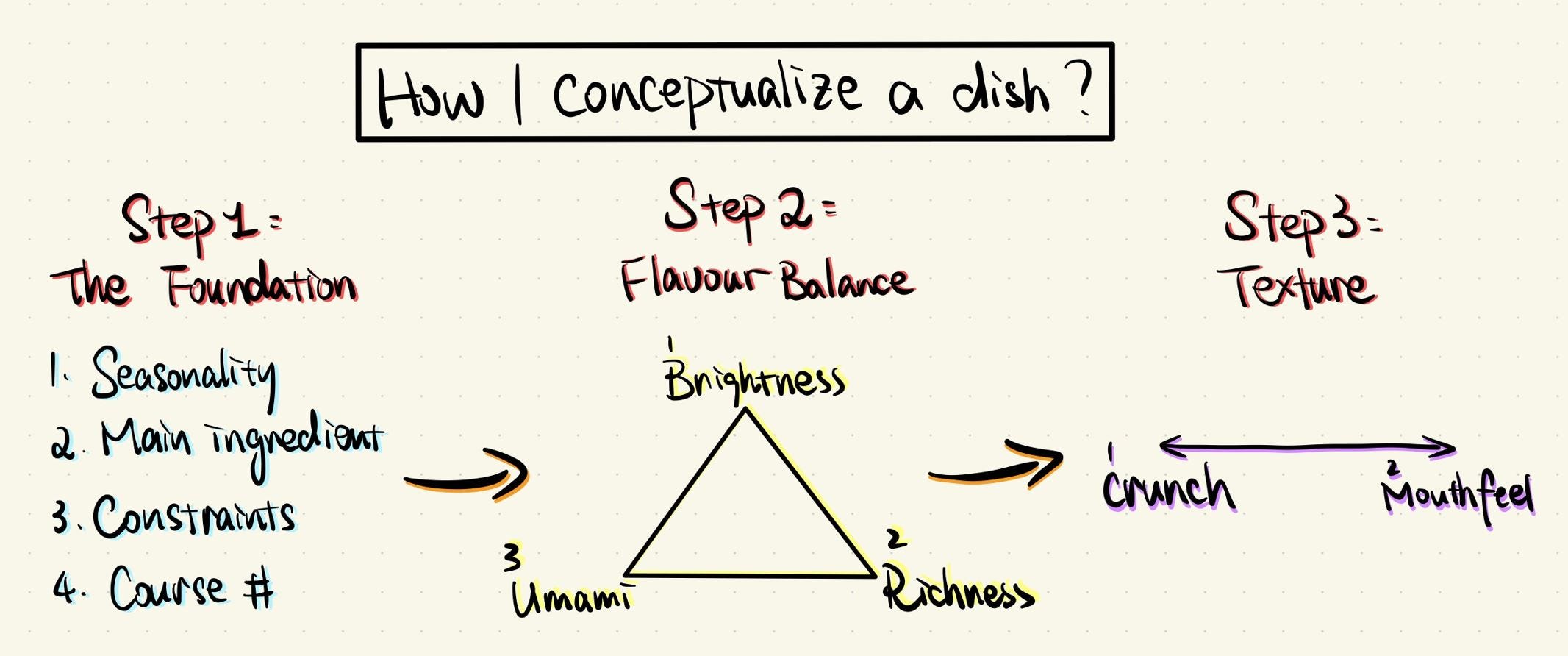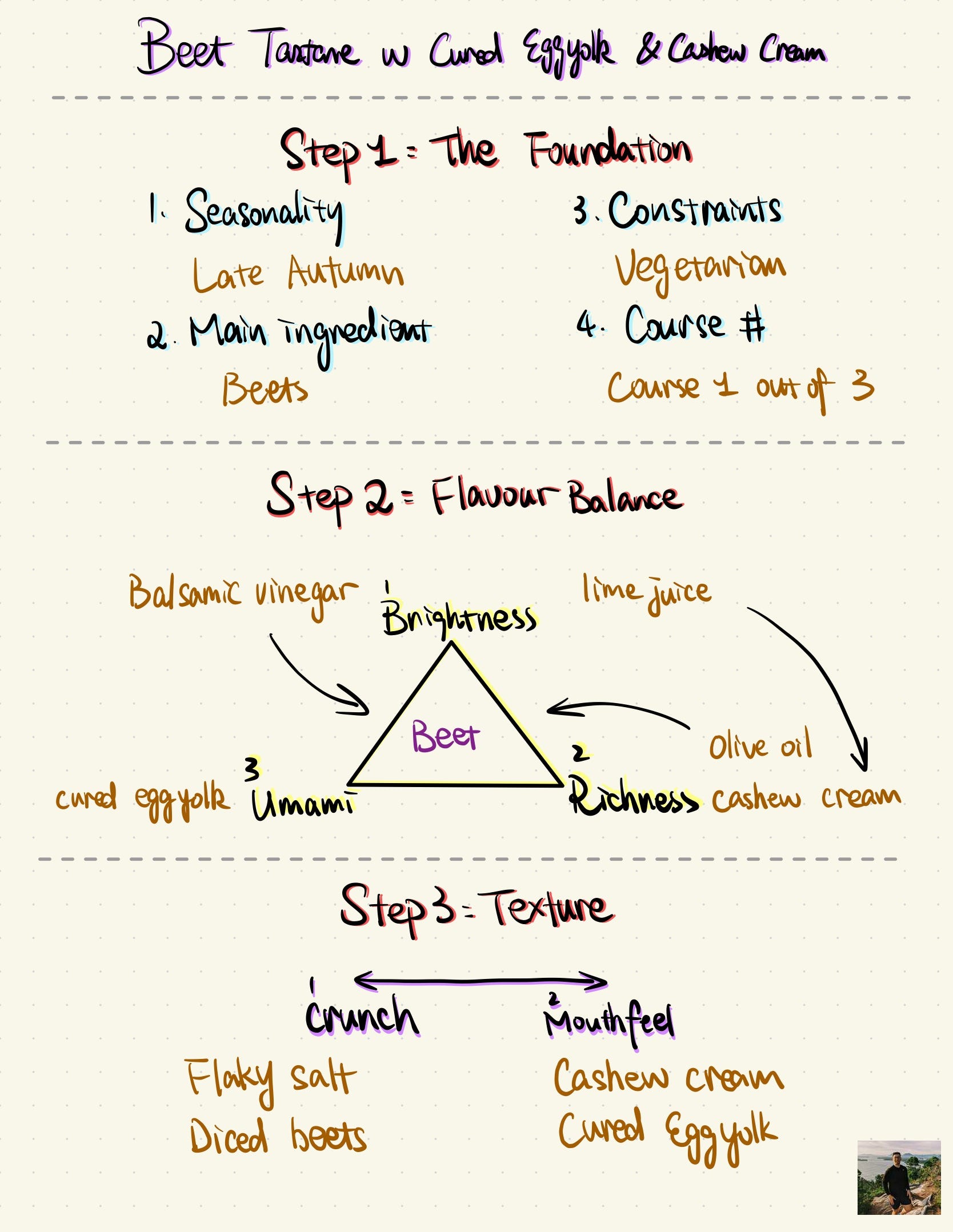I am tired of following recipes…
I have only a handful of recipes on my rotation and don’t know what else to cook…
I wonder how chefs create new dishes with ingredients they are not familiar with…
These were my questions when I started cooking for myself and hit my first plateau of competency. I feel like I am a decent recipe follower and have a good grasp on a few dishes, but I struggle to have the know-how to be the ‘captain’ of my own culinary ship.
Fast-forward a few years to today. Despite just hitting the upper trajectory of the Dunning-Kruger effect, I want to share this ever-evolving framework that helps me conceptualize a new dish even when approaching new ingredients and working environments.
Here we go…
This might seem daunting and arbitrary, but pls bear with me while I break it down for you.
Step 1: The Foundation
1. Seasonality
Growing up in China with the osmosis of Traditional Chinese Medicine’s (TCM) ethos to food as medicine. I see eating locally and according to seasonal influence as not something new or trendy but rather something essential to good health.
Essentially, when in doubt, try to eat what is plentiful and grown locally because this is essentially what nature intended for your body at that time. Also, in general, try not to eat cold or raw foods without having something warm first (even a cup of hot water), as this is good for your Spleen and Stomach, the organs responsible for digestion in your body.
*** Scroll to the bottom of the article if you want to learn more about seasonal ingredient recommendations based on the TCM philosophy. ***
2. Main Ingredient
I always start with the main ingredient. This could be a seasonal vegetable or a protein.
Having a main ingredient that I want to highlight helps me quiet the noise and focus on building a team of great supporting players to bring out the best of the star ingredient.
3. Constraints
I then list the constraints that I need to consider for the dish, such as dietary restrictions or the type of cuisine.
4. Course #
The last part of the foundation is asking myself, “Where does this dish fall on the menu?”
If it is an appetizer, it should be a little lighter and maybe have a punch of acidity. If it is later in the course, it could be heavy and full of umami. (in Japanese, it translates to delicious savoury taste)
Step 2: Flavour Balance
I try to incorporate 3 main areas when I think about flavour balance.
The first is brightness, which is usually something acidic that brings levity to the second part, richness, which is usually something fatty or salty. The third is umami, which rounds everything out.
Step 3: Texture
The last part is texture, which comes in 2 forms.
The first is crunch. This breaks up the monotony of a dish and adds dimension.
The second is mouthfeel. It is best described as how an ingredient coats the inside of your mouth. It is similar to the feeling of eating ice cream or yogurt, and this is usually in the form of a puree and sauce. This helps bind everything together.
Let’s walk the talk!
I know this is not perfect, but I hope this gives you some inspiration to riff in your own kitchen. :)
Happy Cooking!
-JC
Additional info on TCM-based seasonal ingredients recommendations
Spring
Spring (not surprisingly) is the season of re-birth and re-growth. According to TCM, spring is associated with your Liver, which is affected mostly by sour flavours. Thus, reducing the amount of sour food you eat and increasing the sweet and pungent flavours is advisable, as this will help your liver regulate and smooth the flow of Qi in your body. So fruits and other natural sugars are recommended, although in moderation because raw fruit is cold in nature and in spring, your body is still cool from the not-so-long-passed winter. Pungent foods such as garlic and chilli peppers should start to be consumed as well.
After the coldness of winter, you may have developed residual heat signs if your Yin was not properly nourished (see ‘Winter’ below). Such heat signs may include a dry throat, bad breath, or constipation. Foods like bananas (ripened), pears, celery, and cucumber can help.
In general, spring foods that you should try to consume include asparagus, broccoli, peas, leafy green vegetables, spinach, mushrooms (especially morels), fiddleheads, and ramps.
Summer
Like plants, which grow quickly in the summertime, people act more energetically, and our bodies' Qi and blood become relatively more vigorous compared to the other seasons. Therefore, Yang energy should be nourished, and as summer is associated with your Heart, you should reduce the amount of bitter flavours you consume while seeking out more pungent, sour and salty foods. Thus it is advisable in the summer to avoid foods such as coffee, tea, walnuts, dark leafy greens, and grapefruit.
You should instead try to consume foods such as watermelon, berries, tomatoes, cucumber, apricots, peaches, plums, cherries, nectarines, summer squash, beans, okra, zucchini, fermented foods, garlic, and chilli peppers.
Autumn
In nature, autumn is the time when things begin to slow down and prepare for winter. So, you should also begin to participate in less activity and start to preserve your Yang energy while nourishing your Yin. Autumn also correlates with your Lung system in TCM, which is affected most easily by dryness. Thus you want to start nourishing your Yin energy now, promoting the production of body fluids and Blood. Dry weather can bring sore throats, thirst, chapped lips, dry skin, and other signs and symptoms of Dryness in your body.
You can help mitigate potential issues while also preparing for winter by eating such seasonal foods as root vegetables, squash, apples, pears, cruciferous vegetables (e.g. brussels sprouts or broccoli), pomegranates, dates, kiwis, grapefruits, and tangerines.
In order to further nourish your Yin in the autumn, try to steer towards sour, astringent flavours and eat more foods such as lemons, pineapples, and foods preserved in vinegar.
Winter
By wintertime, you should be well-used to the foods and practices you started in the fall, and you are now sticking religiously to the above-mentioned foods and are nearly hibernating in terms of physical activity, almost never inducing perspiration. This will help to ensure that your Yin continues to be nourished for this coming harsh season, and your Yang will be preserved for the eventual spring season.
Since TCM believes that in winter our diet should be adapted to focus on enriching Yin and subduing Yang, we should add to our diet foods that are higher in calories, especially those high in proteins. It is not advisable to lose much weight (if any) over the winter by adding more red meat, duck and eggs, or foods like nuts, seeds, avocados and coconut if you are vegetarian.
The winter is the season of the Kidney energy system in TCM, which does not like salty foods and prefers bitter foods. Foods with bitter flavors include: apricot, asparagus, celery, coffee, tea, grapefruit, hops, kohlrabi, lettuce, radish leaves, kale, vinegar and wine.





